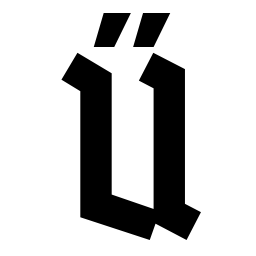Constructors¶
A constructor is a special method that is automatically called during a struct or class instance creation. It’s required in order to initialize fields and perform any other operations that are required for proper initialization.
A constructor is a method with special name constructor.
It’s possible to avoid specifying of this parameter, in such case implicit this will be created.
this in a constructor can’t be declared as byval.
It’s possible to overload a constructor - like any other function.
A constructor may have special section inside it - fields initialization list.
This list is placed before constructor body in {}, consists of () and field names with initializers separated by comma.
Struct or class fields may be initialized inside this list.
Fields without default initializer, imut fields, reference fields may be explicitly initialized in this list.
A constructor is called not like any other method, but with usage of () initializer.
A constructor with no parameters (default-constructor) may be implicitly called.
Directly accessing a constructor is allowed only inside unsafe code.
Constructor usage example:
struct Vec
{
i32 x;
i32 y;
fn constructor()
( x= 0, y= 0 )
{}
fn constructor( i32 in_x, i32 in_y )
( x= in_x, y= in_y )
{}
}
fn Foo()
{
var Vec v0(); // Explicitly call default-constructor
var Vec v1; // Implicitly call default-constructor
var Vec v2( 5, -3 ); // Call the constructor with two arguments
}
Constructors effects¶
A constructor with single immutable reference parameter with type equal to this type is considered to be a copy constructor.
This constructor may be explicitly called by the compiler in places where copying of a value is required.
A struct, that has explicit constructor (except copy-constructor) can’t be initialized with member-by-member initializer. Initialization of this struct is possible only via some constructor.
Constructors generation¶
The compiler can generate default constructor for a struct or class if this constructor is not defined explicitly. But for such auto-generation all fields must be default-constructible and there must be no reference fields.
The compiler can generate copy constructor for a struct, but only if this constructor is not defined explicitly. But for such auto-generation all fields (except reference fields) must be copy-constructible.
struct Vec
{
i32 x= 0;
i32 y= 0;
}
fn Foo()
{
var Vec v0; // Auto-generated default-constructor will be called
var Vec v1(v0), v2= v0; // In both cases auto-generated copy-constructor will be called
}
Conversion constructor¶
There is a special constructor kind - conversion constructor.
It exists in order to allow implicit conversions from some value to a value of a struct/class.
This constructor is defined via conversion_constructor keyword as function name.
This constructor must have only one parameter (except this).
A conversion constructor may be used as any other constructor. Additionally it may be called implicitly where a type conversion is required.
struct IntWrapper
{
i32 x;
fn conversion_constructor( i32 in_x ) ( x= in_x ) {}
}
fn Bar( IntWrapper iw );
fn Foo()
{
var IntWrapper iw0(55); // Use the constructor as usual.
var IntWrapper iw1= 42; // Implicit usage if the conversion constructor during initialization.
Bar(66); // Implicit conversion in a function call.
}
